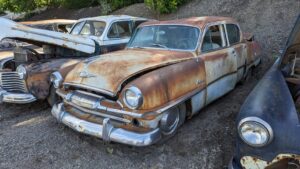What You Need to Know About the NYS Burn Ban

As temperatures rise and we begin to see some
color and life return to the local landscapes, you may be excited to get back
outside and spend some quality time around a campfire. But don’t go burning any brush just
yet—the New York State 2022 burn ban is in effect until May 14.
Every spring NYS residents are prohibited from
residential vegetation and brush burning for two months between the middle of
March and the middle of May. Although conditions may be wet and snowy, rising temperatures can quickly
give way to conditions conducive for wildfires. The annual burn ban is enacted
by the NYS Department of Environmental Conservation (DEC) as a means of
preventing wildfires during a time when they are most likely to occur.
As the weather gets warmer and vegetation and
brush dries out, spring is perhaps the busiest season for forest rangers and
firefighters responding to wildfires. According to the DEC, open burning – and
more specifically, the open burning of yard vegetation and brush – is the
single greatest cause of wildfires in the state. Since enacting the burn ban in
2009, the DEC states the number of wildfires in NYS is down by more than 40
percent.
The burn ban does not pertain to backyard fire pits and campfires that are less
than three feet in height and four feet in length. The DEC advises individuals
who wish to build a small fire to only use charcoal or dry, clean,
untreated/unpainted wood. As a reminder, it’s always illegal to burn garbage, paper, or leaves in NYS.
While the burn ban is in effect across the
state, you should check with your local municipality to see if any further
restrictions are in place for you. If you reside in a city with a population of
more than 20,000, open burning of vegetation and brush is prohibited year-round.
If you reside in the Adirondacks or Catskill mountains, you may
need a special permit to burn brush outside of the burn ban season.
Anytime you’re lighting a fire, it’s important
to be cautious and aware of the risks. Always set a
perimeter to contain your fire stones, or cinder blocks are good options. Avoid
lighting fires on especially dry or windy days, and never leave a fire burning
unattended. Keep water on hand so that you’re able to put your fire out when
you need to. Before leaving a fire pit, make sure all the embers are out and
have completely cooled down. If the remnants of your fire are still too hot to
touch, the fire is too hot to leave unattended.







